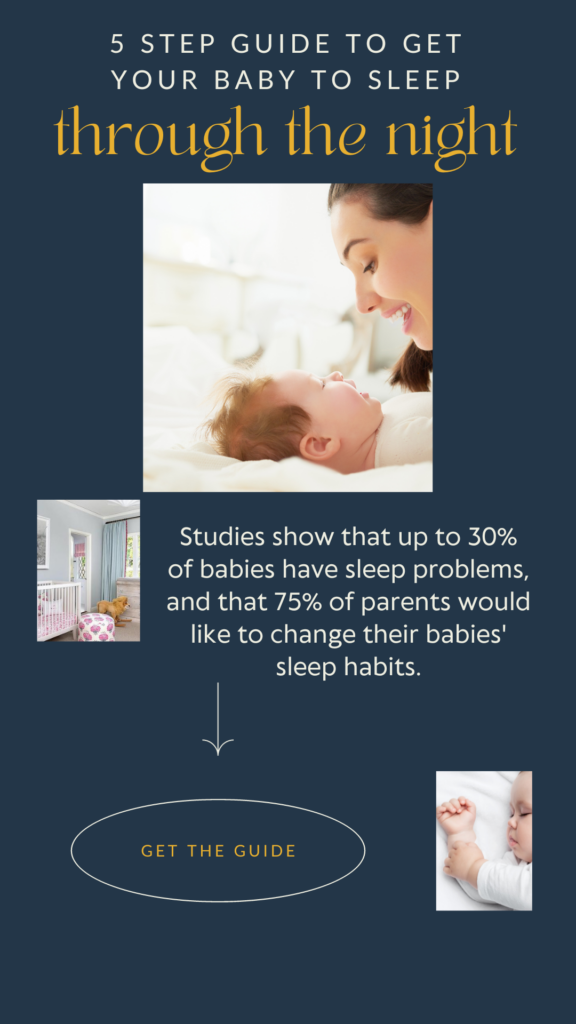As we head into November the inevitable happens, the clocks fall back an hour and disrupts sleep nationwide. Daylight savings and infant sleep can cause some confusion and crankiness within our children. For adults it is just as disruptive to our internal clock and as a result there are some shocking statistics when we spring forward. Since we are focusing on falling back and gaining an hour of sleep I will skip the stats and focus on the Infant kiddos today and how being off their schedule(even just an hour) can cause some really long days for parents. If your child is already having trouble sleeping download our Free 5 Step Guide to getting your Baby to Sleep Through the Night.

Routine, structure, consistency and predictability are the best way to give your child a safe and secure environment that they know what to expect. This also sets up their bodies to fully support them for rest at their naps and nighttime. If you have a daily routine you stick to, changing that by an hour at Daylight Savings can really throw a child for a loop. Their internal clock is so strong that an hour change can be really confusing. They might wake up really early in the morning, be exhausted and cranky most of the day, and have trouble napping at the new time that the clock says.
What is a biological clock?
A biological clock is when our body knows what to expect and can release the correct hormones to support it. This includes melatonin for rest, and cortisol to wake up and feel energetic. The biological clock also develops ingrained patterns for eating and signals hunger. This is why your child might wake in the night at the same exact time. Their body is set to wake up then. A common mistake is when we think putting our child to bed later might produce a later wake up time and low and behold they are still up at their regular morning hour no matter what.
How can we help our infant out through the time change?
1. Shift their nap and bedtimes by 15 minutes each day.
Each day push the clock by 15 minutes for their naps and bedtime until you reach the hour mark. This is less abrupt and will ease them into the transition. You will have a less cranky baby, and they will have an easier time falling asleep.
2. Wait.
Early morning wake up. The child will most likely still wake up at their regular time.Start by waiting 10-15 minutes each day before getting them up for the day. You will gradually give them the cue that it is not time to get up yet and as the bedtime moves back 15 minutes, they will adjust.
3. Stay Consistent.
Remember routine and consistency are VERY important. In order for your infant to understand what is expected of them and adapt to change they must get clear, consistent cues.
4. One Week.
Expect this transition to take about 1 week for the child to fully adjust(depending on their age).
Newborns and children with 3+ naps.
Why do I not address newborns within Daylight Savings? Most newborns do not have a strong biological clock built yet. As a Pediatric Sleep Consultant I don’t normally see families until after 4 months of age, when their sleep cycles are extending and naps are becoming more established. I actually love working with newborns on their sleep. They have don’t have many bad habits and it is a great time to gradually work on sleep skills. You can read what to expect with your newborn for more information on newborn sleep. Anyway back to Daylight savings! Since a newborn’s biological clock is just getting started you can adjust the clock fully by one hour. If your newborn is close to the infant age of 3-months, or has an established schedule I would transition gradually with the 15 minute increments.
Some extra tips for Daylight Savings, falling back.
To help your child adjust easily:
- Exposure to light at the desired wake up time is important. This is a really dark period for the next 6-weeks and humans are meant to follow the sun. Artificial light is fine. Goal is when you get to the time that it is ok to get them up for the day, turn on all the lights, and celebrate that it is morning.
- Darkness is on your side at bedtime but the child and yourself might be getting sleepy a lot earlier. Try to keep bright lights on until 1 hour before bed. At that 1 hour mark before bed you can dim the lights and start using softer voices, and turn off technology.
This is all about simple cues for your child to understand day from night. You can’t just say to your Infant “Hey it’s nighttime go to sleep.”. You must show and guide them in the right direction to adjust their biological clock or in a newborns case build it. If you need support through this transition or if your child is already having sleep difficulties, we are here to help! We customize revolutionary sleep plans for your child and your unique family unit and see life changing results. Contact us for your FREE 30-minute call today so we can better understand your needs.
[…] about your child’s biological or if you child is yet to be a toddler head over to part one of daylight savings. What can we do as parents to ease this routine disruption and avoid really early mornings and a […]